[ad_1]
Exercises with a barbell are the most effective for biceps. With just one barbell at your disposal, you can do a full workout for the biceps, work every fascicle of the biceps brachii muscle, and also perform hammer raises for the forearms. What barbell exercises for biceps are there? Let’s look at all the options and find out how to pump up your biceps with a barbell?
Advantages and disadvantages
Advantages:
- The main advantage of the exercise is using heavy working weight. Thanks to this, the muscles receive the load they need for muscle growth.
- The bar allows you to effectively work both biceps.
Among the disadvantages and there are not many of them, it should be noted the lack of asymmetry correction and the low efficiency of working out the peak of the biceps.
All options with a barbell for biceps
Seated barbell curls
There are several variations of this exercise, but they are all performed according to the same principle. Let’s take a closer look at the technique of performing barbell curls while sitting. This option, in my opinion, is the best among others, since, firstly, it is less traumatic, and secondly, it allows you to perform the exercise with the cleanest technique possible.
So, you can perform the exercise using a wide grip, which places the load on the inside of the biceps, and the classic version of lifts, in which you need to grip the bar shoulder-width apart. There is also an option to perform it with a narrow grip, but for it you should use a W-shaped bar.
- Starting position: sitting on a bench. The bar rests on your hips. Hands on the bar. The back is straight and the shoulders are straightened.
- The upward movement occurs as you exhale. When lifting the barbell, the elbow joints and shoulders are in the same place.
- By bending the elbow joints, the bar rises up until it stops. At the top point of the amplitude, you should hold the barbell for a second and slowly lower it to your feet without touching your hips.
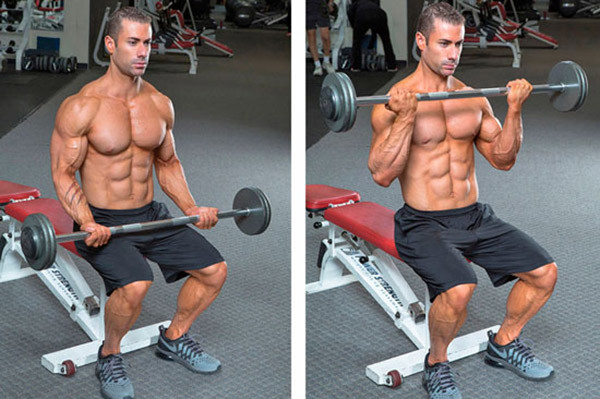
Standing barbell curls
The standing exercise is performed slightly differently. During the downward movement, the arms are lowered to almost full straightening at the elbow joints. In order to reduce the load on the joints, you do not need to fully extend your arms, and also relax your biceps at the final (lower) point of the amplitude.
This exercise is performed with both a straight and a W-shaped bar. This bar allows you to reduce the load on the elbow and wrist joints. Close-grip biceps curls using this bar are the best option for focusing on the long biceps and brachialis.
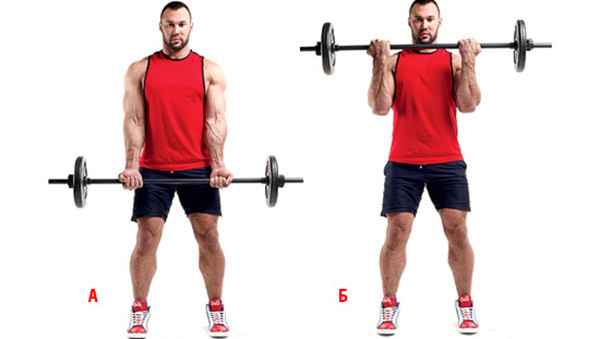
Barbell curls while sitting or standing can be performed with a neutral or reverse grip. For curls with a neutral grip, you need to use a special bar. This exercise option is essentially an alternative to hammer curls and is aimed at developing the brachialis.
Barbell curls with a reverse grip are aimed at developing the muscles of the forearm and the purpose of their implementation is to increase strength and potentially increase performance in arm exercises.
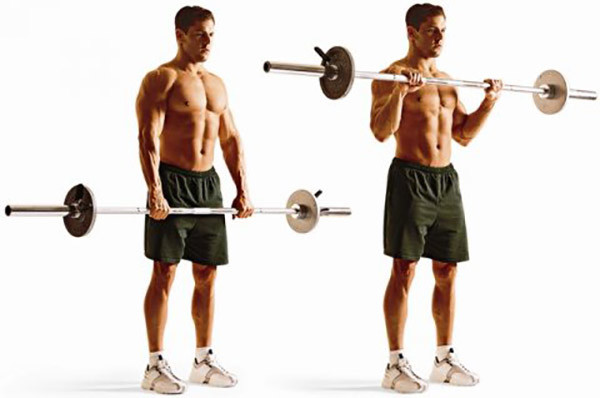
Scott Bench Curl
This is an isolation exercise that can be used for accentuated muscle development. Performed while sitting in the exercise machine. When working on a Scott bench, you need to adjust the position of the palm rest or seat. Depending on the emphasis, your hands should be placed on the platform to support your elbows.
- After removing the barbell from the stand, you need to perform an upward movement while exhaling.
- You should work at a slow pace.
- Raise your hands in concentration.
- It is best to use moderate weight on the barbell in this exercise and perform curls on a Scott bench at the end of the biceps complex.
- It is very important not to fully extend your arms or relax your biceps at the bottom of the range.
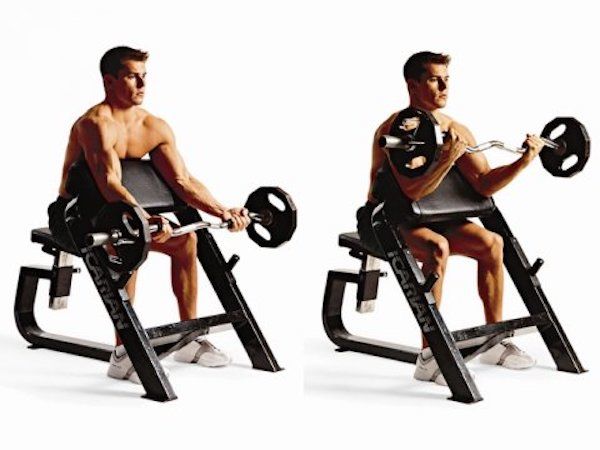
Biceps curls on an incline bench
This exercise targets the biceps and minimizes work on the anterior deltoids by bending forward. This option is performed on a bench that has an incline of 70 degrees.
- After adjusting the bench, you need to take a position with your chest resting on the back.
- Prepare a barbell with a working weight in advance and place it under the backrest so that you can reach it.
- Having picked up the bar in your hands, you can begin to perform the exercise.
- Bending occurs as you exhale. Shoulders and back are straightened, and arms with weight are directed downwards.
- Extension of the arms occurs while inhaling.
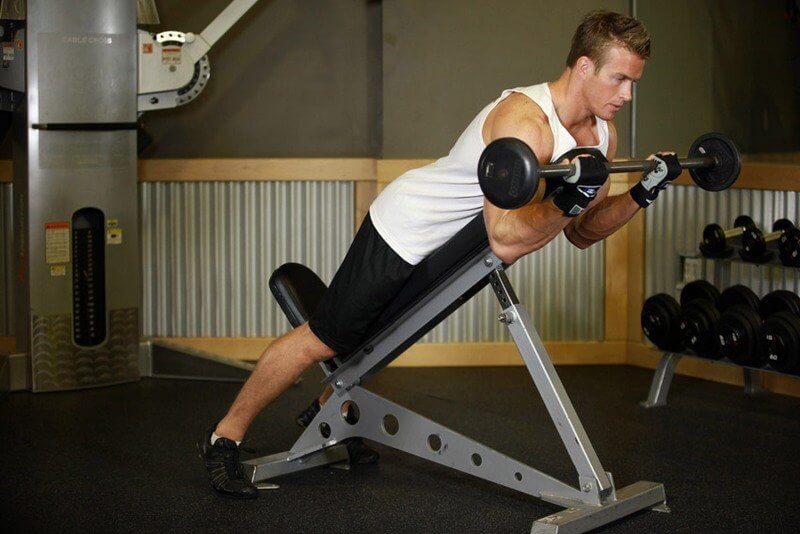
Recommendations
By training your arms, you can develop strength, improve the quality of muscles and work on mass. The training method and choice of exercise depend on this. For biceps exercises with a barbell, it is important to use low-repetition training and work in the range of 12-14 repetitions, which is aimed at developing the volume of the biceps.
The multi-repetition mode for working with a barbell is less relevant, but it is also not excluded, especially if there are no other sports equipment. There shouldn’t be a lot of exercises in biceps training. Two or three are enough. If the athlete is a professional, then their number can be 5-6 exercises.
How to properly pump your biceps with a barbell and how to implement it into your workout
Barbell exercises should be performed early in your workouts if not an option on a Scott bench. As an example, consider a biceps workout for professional athletes:
[ad_2]

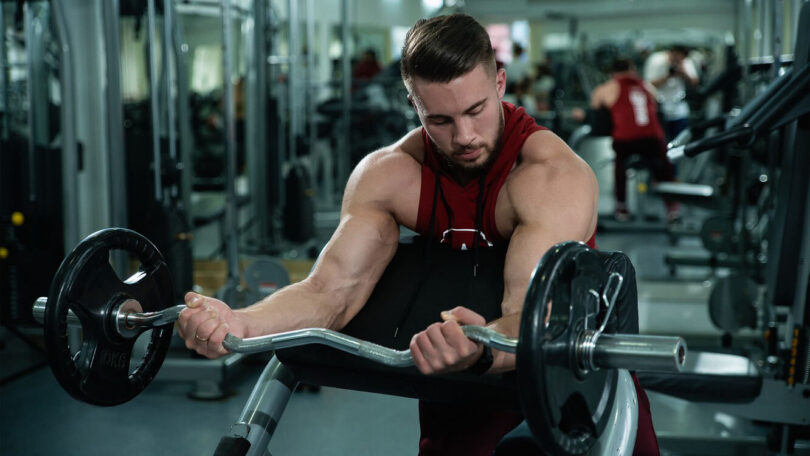
Leave a Comment